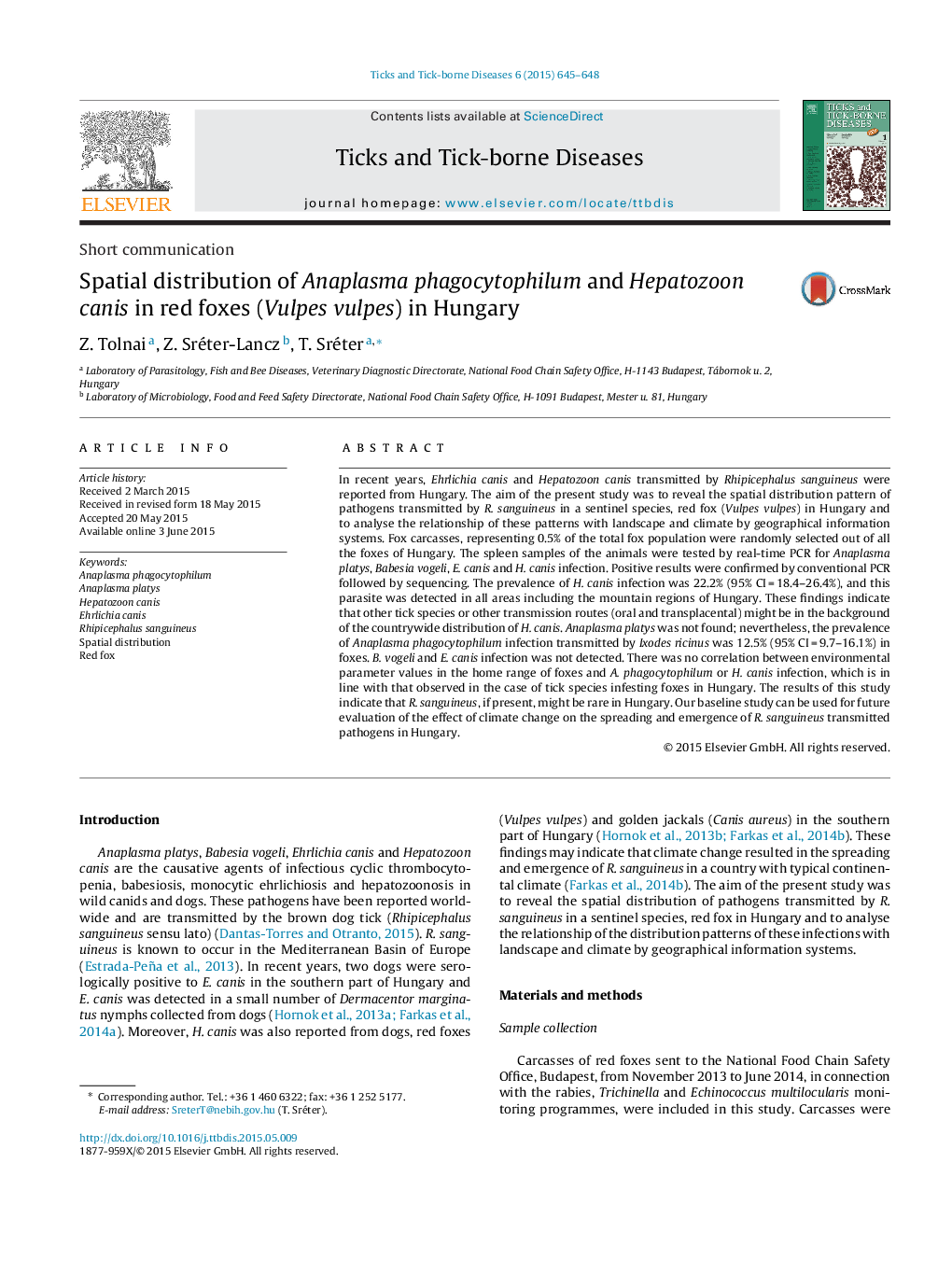| Article ID | Journal | Published Year | Pages | File Type |
|---|---|---|---|---|
| 5807259 | Ticks and Tick-borne Diseases | 2015 | 4 Pages |
In recent years, Ehrlichia canis and Hepatozoon canis transmitted by Rhipicephalus sanguineus were reported from Hungary. The aim of the present study was to reveal the spatial distribution pattern of pathogens transmitted by R. sanguineus in a sentinel species, red fox (Vulpes vulpes) in Hungary and to analyse the relationship of these patterns with landscape and climate by geographical information systems. Fox carcasses, representing 0.5% of the total fox population were randomly selected out of all the foxes of Hungary. The spleen samples of the animals were tested by real-time PCR for Anaplasma platys, Babesia vogeli, E. canis and H. canis infection. Positive results were confirmed by conventional PCR followed by sequencing. The prevalence of H. canis infection was 22.2% (95% CIÂ =Â 18.4-26.4%), and this parasite was detected in all areas including the mountain regions of Hungary. These findings indicate that other tick species or other transmission routes (oral and transplacental) might be in the background of the countrywide distribution of H. canis. Anaplasma platys was not found; nevertheless, the prevalence of Anaplasma phagocytophilum infection transmitted by Ixodes ricinus was 12.5% (95% CIÂ =Â 9.7-16.1%) in foxes. B. vogeli and E. canis infection was not detected. There was no correlation between environmental parameter values in the home range of foxes and A. phagocytophilum or H. canis infection, which is in line with that observed in the case of tick species infesting foxes in Hungary. The results of this study indicate that R. sanguineus, if present, might be rare in Hungary. Our baseline study can be used for future evaluation of the effect of climate change on the spreading and emergence of R. sanguineus transmitted pathogens in Hungary.
